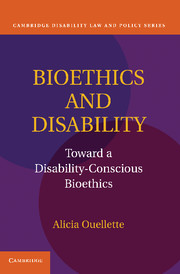5 - The Reproductive Years
Published online by Cambridge University Press: 07 June 2011
Summary
In 2005, an 11.5-foot-tall, 13-ton sculpture entitled “Alison Lapper Pregnant” by British artist Marc Quinn was unveiled on the fourth plinth of Trafalgar Square. Subject and model Alison Lapper was cast in the nude when she was seven months pregnant with her son Parrys, whom she has raised since his birth in 1999. Lapper was born without arms and with shortened legs as a result of a medical condition called phocomelia. Brought up in British institutions for children with disabilities, Lapper is an artist in her own right. Her work focuses on her lived experience in her particular body. The public display of the Quinn's representation of Lapper's nude pregnant body ignited a public furor.
Among the reactions to “Alison Lapper Pregnant” were surprise, dismay, and revulsion at the notion that a woman with disabilities was a sexual being who was raising a child. Despite the fact that millions of people with disabilities of all types enjoy healthy sexual relationships and successfully parent children, a belief that people with disabilities are asexual or somehow incompetent to parent a child persists. People with disabilities of all kinds are “seen as child-like, asexual or over-sexed, dependent, incompetent, passive, and genderless and therefore considered inadequate for ‘nurturant, reproductive roles….’” The belief may be the result of what social scientists deem the “spread” of stigma: “[A]n impairment of one capacity is perceived by others to spread to an impairment of all areas.” That belief translates to prejudice.
- Type
- Chapter
- Information
- Bioethics and DisabilityToward a Disability-Conscious Bioethics, pp. 194 - 236Publisher: Cambridge University PressPrint publication year: 2011



